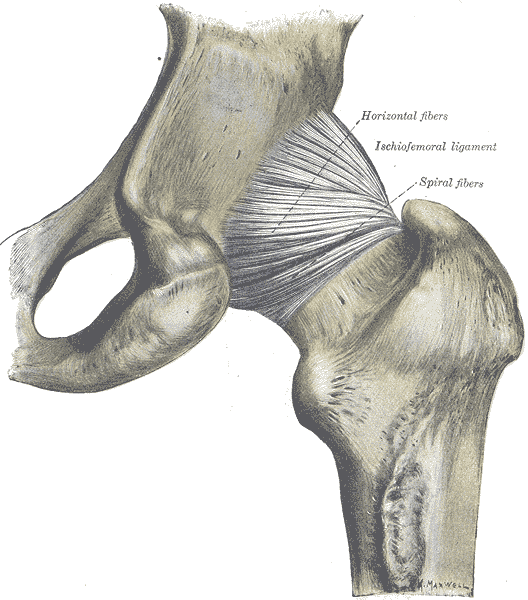One of the questions we frequently receive at the Institute is "Do you have any research about ___________?" At times, therapists are looking for information that can help with patient care, or they might be looking for support in a claims denial letter, or foundational material for a presentation. If you have been taught how to find articles, this may seem like a simple task. Many of us therapists went to school when the only use of a computer was for word processing, if we were lucky enough to have progressed from the typewriter or even the electronic typewriter. (Imagine no Google, no Wikipedia, and no Amazon to purchase textbooks!) There are basic search skills that can be shared so that every person interested in a particular topic can find recent articles in free search engines. While the full article may not be available, many times you will have access to full articles that synthesize recent works. (One website that you can use that offers full text article access is PubMed Central.) If you are not interested in reading articles, but prefer to read a scholarly summary of a health topic, check out www.uptodate.com, where you can subscribe to have full access to excellent evidence-based summaries. You can read through the reference lists on the site as well to see if there is a resource that you want to track down.
One method of finding articles is to go to www.googlescholar.com. In the search bar, type in the topic you are interested in, such as "urinary incontinence." You will then be provided with a list of all articles that have urinary and/or incontinence in the title or in the key words of the research. An even more refined way to conduct your search is by using Boolean terms, in which you connect your search words by "AND" or other key terms. To see this in action, let's say you want to know if there is any research about urinary incontinence and prostatectomy surgery. Try completing a google scholar search by typing in the following: "urinary incontinence" AND "prostatectomy". (Be sure to use the quotation marks and type the word "AND" in capital letters.) You will see that you come up with some very nice articles about the specific topic you searched. To make sure you are looking at recent articles, go to the left side of the search page and under the words "Any time" choose an option such as "Since 2010" so that you are seeing articles from within the last 5 years. Next, maybe you want to know if there is evidence for rehabilitation. Add the word rehabilitation, like this: "urinary incontinence" AND "prostatectomy" AND "rehabilitation". You will see that you now have even more results specific to rehabilitation of the condition. On the right side of the page you might see a link that starts with [PDF] where, if you click on it, you will usually be brought to the full article rather than just the abstract. If you see an article that you think fits your search, you can also click on "Related articles" located under the brief description of the article.
Being able to look up articles serves many purposes, including staying updated on patient care, and discussing evidence with peers, providers, and patients. Another valuable reason to find your own research is when studying for certification exams such as the Pelvic Rehabilitation Practitioner Certification (PRPC). On the PRPC certification page on our website, you can find a list of some articles for which we have added links. (Remember that there is no need to print out articles anymore! Save a tree and simply save the articles as a PDF file. You can name the article by the author's last name, year and main topic, and store in a folder on your computer so it is easy to access- no file drawer required!) If you are thinking about taking the PRPC exam, there is no time like the present to get your application put together! The deadline for applying is October 1 of this year, with the test taking place in the first couple weeks of November. Personally, I have enjoyed reading the blog posts introducing therapists who have earned their PRPC title- the reasons for seeking the distinction are very interesting and meaningful. We would love to see your name on the list of certified therapists, so check out the details on the website and contact us if you have any questions about the PRPC application process!
In an article describing vascular dysfunction in women with chronic pelvic pain (CPP), Foong and colleagues describe the common finding of pelvic venous congestion. This study aimed to determine changes in microcirculatory function in women with chronic pelvic pain compared to controls. Eighteen women presenting with chronic pelvic pain of at least 1 year and 13 women without pelvic pain or congestion were evaluated for isovolumetric venous pressure, miscrovascular filtration capacity, and limb blood flow. All women were of reproductive age, menstruating regularly, and measurements were made during the mid follicular and the midluteal stages of the same 28 day cycle. The 18 women with CPP fit previously established criteria for pelvic congestion.
The women in the patient group were re-evaluated at 5-6 months following treatment for pelvic congestion, with treatment including medication-induced suppression of ovarian function for 6 months, and in 4 patients, hysterectomy and bilateral salpingo-oopherectomy. All of the patients received daily hormone replacement therapy (Premarin and Provera) "…to minimize the hypo-oestrogenic effects of treatment."
Findings of the research include an elevation in isovolumetric venous pressure, or Pvi in women with CPP compared to controls. Interestingly, there were no changes related to menstrual cycle in measures of microvascular filtration capacity and and limb blood flow. The conclusion of this study is that women with chronic pelvic pain may present with systemic microvascular dysfunction. The noted increase in Pvi "…may be attributable to systemic increases in post capillary resistance secondary to neutrophil activation." Following treatment for pelvic congestion, the value changes in isovolumetric venous pressure were no longer present.
This research highlights the noted changes in microcirculatory function in women with chronic pelvic pain. The obligatory chicken and egg conversation weighs in: does pelvic congestion lead to pelvic pain, or does pelvic pain always precede pelvic congestion? While the answer is probably that either condition can cause and perpetuate the other, as pelvic rehabilitation providers, our first thought might be: what would the research outcomes be if the treatment were not medication-induced ovarian suppression or surgery, but therapy directed to the pelvic pain and congestion? The Institute offered, for the first time last year, a course that allows the therapist to address pelvic pain through treatment of pelvic lymphatic drainage. The Lymphatic Drainage for Pelvic Pain continuing education course is a 2-day class instructed by Debora Hickman, a certified lymphedema therapist. Sign up now to save your seat in October in San Diego, and if you can't make this course, contact us to let us know you are interested in this special topics course, and we will keep you informed of any new course bookings!

What structures may be implicated in posterior hip pain in the athlete? This question is addressed in a comprehensive article that can be accessed here. Complaints of posterior hip pain are increasingly common, and the differential diagnosis can include a variety of conditions and structures. The differential diagnosis of posterior hip pain may include hip extensor or hip rotator muscle strain, femoroacetabular impingement, proximal hamstring rupture, piriformis syndrome, and referral from the lumbar spine or sacroiliac joint, and systemic conditions such as cancer or infection, according to the article. To this list, could we add sciatic and other nerves in the buttock and pelvic floor, ischial injuries or ischial bursa irritation? With lists that include both systemic dysfunction and a variety of potential neuromusculoskeletal causes of posterior hip pain, the therapist must have a comprehensive ability to apply clinical reasoning, expert interview, and solid clinical examination and evaluation skills.
Posterior hip pain is only one type of hip pain, and one complaint within the world of pelvic pain. How does the therapist keep sharp tools for diagnosing musculoskeletal conditions, other connective tissue dysfunctions, as well as screen for disease conditions and other dysfunctions that can mimic hip or pelvic pain? Herman & Wallace has increased our offerings of courses towards differential diagnosis of hip and pelvic pain, including Biomechanical Assessment of the Hip & Pelvis, taught recently by Steve Dischiavi. (Stay tuned for Steve's upcoming course schedule!)
Another continuing education course that offers excellent opportunity to fine tune your skills in Differential Diagnosis of Pelvic Pain is coming up in October in Connecticut. The course is instructed by Peter Philip, who completed his Doctor of Science degree on the topic of Differential Diagnostics of Pelvic Pain. In addition to learning detailed anatomy and palpation skills, the participant can take away from the course a better understanding of embryology, the somatic and autonomic nervous system, and pelvic conditions that may be caused by or influenced by pelvic pain. The course will include both internal and external pelvic muscle examination techniques. With seven labs scheduled in this continuing education course, the participant will have abundant opportunities to practice instructed skills.
This post was written by H&W instructor Ginger Garner, MPT, ATC, PYT. Ginger will be instructing the course that she wrote on "Yoga as Medicine for Pregnancy" in New York this November.

The power of language is inarguable. The spoken word affects how we see, perceive, and interpret the world around us. Language can also influence our actions and behavior, especially toward people around us.
The power of language in health care is not only important, but critical in prenatal health. The language a provider uses can help or harm a mother’s confidence and even her beliefs about birth.
Action to recognize and respond to the importance of language in general health care began with People First Language (PFL) movement. PFL advocates for mindful use of language that identifies the person first, rather than identifying the person based on their disability. Advocacy groups first started the movement for children’s sake. Mother’s who had given birth to children with Down’s syndrome wanted their children to be recognized as people first, rather than by their disability.
An example of People First Language would be, “Beth is a child who has Down’s syndrome,” instead of “Beth is a Down’s (syndrome) child.”
The second statement can be dehumanizing, whether intentional or subconscious. The effects of being identified as a disability, rather than as a human being, are far reaching on psycho-emotional and physical health, and can project a negative connotation on the individual. Read more on People First Language
However, have you noticed that no such language is used for prenatal care?
The shameful statistics on American childbirth and mortality rates for mothers and babies is no secret, internationally. However, many US mothers may not realize that their likelihood of receiving poor prenatal care is so high. In fact, it is dangerously high. Read my post: American Childbirth: A Human Rights Failure?
However everyone, including health care providers who provide prenatal care, can have a powerful impact on improving childbirth in America.
How? Through language.
Yoga as Medicine for Childbirth & Postpartum courses I teach for Herman & Wallace Pelvic Rehabilitation Institute, language is a powerful part of the empowerment process for women. It is an integral part of the biopsychosocial model available to 21st century healthcare providers who use yoga in prenatal and postpartum care. Yoga can improve postpartum physical therapy care and help moms who want to have a natural childbirth. Yoga is also a powerful prenatal mind-body fitness aid as well and works to decrease pain across the journey of pregnancy and into postpartum. Read this post on Why Every Expectant Mom Needs Yoga.
Yoga is a mind-body practice that places paramount importance on language. In fact, yoga uses an entirely different language than biomedical prenatal or postpartum care. Yoga focuses on empowerment through language and action.
Prenatal care using women-centered language looks very different than the historically patriarchal driven vernacular that is still being used today. These statements describe the same situation, but have profoundly different effects on a woman and her confidence and ability to give birth. Consider these common scenarios from a perspective on The Power of Birth Language.
Which scenario would you rather give birth in:
“My doctor/midwife is going to let me use a birthing tub.”
VERSUS “My doctor/midwife supports my plan to give birth in water.”
“My doctor/midwife delivered my baby.”
VERSUS “I gave birth to my baby (in the are of ______).
The first scenario in each example takes power from the mother and negates her participation and involvement in pregnancy and birth. The first scenarios also place her in a dominator relationship under the authority and order of the health care provider.
The second scenario in each example recognizes that mothers should be full partners in their own healthcare, not subordinates without a voice. The second scenario also recognizes that birth should be women-centered, not healthcare provider-centric.
Woman-centered language can usher in a powerful shift in prenatal care, helping tip the scales toward the positive for birth reform in America. Adopting the mindfulness of an ancient system, like yoga, can likewise enrich and expedite the process of reclaiming the full power of birth.
To learn more about Ginger's Women-centered continuing education for health care providers seeking integrated care when working with women during pregnancy or postpartum, visit Yoga as Medicine for Childbirth & Postpartum and join her for Yoga as Medicine for Pregnancy
According to the American Cancer Society, approximately 233,000 new cases of prostate cancer will be diagnosed this year, and nearly 30,000 men will die from the disease. The diagnosis and treatment of prostate cancer in the United States has experienced significant shifts in the past few years, making management of cancer survivors challenging. One of the big changes in prostate cancer screening took place in 2011; the US Preventive Services Task Force recommended against routine prostate specific antigen, or PSA testing due to the level of potential harm such as psychological distress and complications from the biopsy. You can read a prior post about that here. New guidelines for providing care to prostate cancer survivors have been published by the American Cancer Society so that providers can better identify and manage the side effects and complications of the disease and recognize appropriate monitoring and screening of survivors.
In patients younger than 65 years of age, radical prostatectomy surgery is the most common intervention for prostate cancer. Long-term side effects of radical prostatectomy commonly include, according to the guidelines, urinary and sexual dysfunction. Urinary incontinence or retention can occur following prostatectomy, and sexual issues can range from erectile dysfunction to changes in orgasm and even penile length. Other common treatments, such as radiation and androgen deprivation therapy, are also related to urinary, sexual, and bowel dysfunction, as well as a long list of "other" effects.
These guidelines were developed using evidence as well as expert recommendations. Topics covered include obesity, physical activity, nutrition, smoking cessation, and surveillance. BMI as a baseline measure is recommended as a screening tool because elevated BMI is associated with poorer health outcomes. Increased physical activity can be related to higher quality of life and general benefits in cardiorespiratory health and physical function. Exercise recommendations are for 150 minutes/week of moderate intensity exercise or 75 minutes/week of vigorous intensity physical exercise. Nutrition suggestions include eating a diet that is rich in vegetables, fruits, and whole grains. Because smoking after prostate cancer increases the risk of recurrence, therapists should discuss the benefits of smoking cessation.
All of the above issues concern pelvic rehabilitation providers; patient concerns about sexual heath, urinary and bowel health, and subsequent pain in the abdomen or pelvis following treatment for prostate cancer are all conditions that can be positively influenced in the clinic. All of the lifestyle and wellness recommendations are ones that can be reinforced in pelvic rehabilitation, and patients can be referred for more specialized education when needed. To learn more about the care of men following prostate cancer, come to Male Pelvic Floor Function, Dysfunction, & Treatmentcontinuing education course in October in Tampa. Also, stay tuned for an announcement about our new Rehabilitation of the Post-Prostatectomy Course coming in 2015! (Send us an email if you are interested in hosting the new continuing education course that will focus on post-prostatectomy (and related issues) recovery!)

Concepts in "core" strengthening have been discussed ubiquitously, and clearly there is value in being accurate with a clinical treatment strategy, both for reasons of avoiding worsening of a dysfunctional movement or condition, and for engaging the patient in an appropriate rehabilitation activity. Because each patient presents with a unique clinical challenge, we do not (and may never) have reliable clinical protocols for trunk and pelvic rehabilitation. Rather, reliance upon excellent clinical reasoning skills combined with examination and evaluation, then intervention skills will remain paramount in providing valuable therapeutic approaches.
Even (and especially) for the therapist who is not interested in learning how to assess the pelvic floor muscles internally for purposes of diagnosis and treatment, how can an "external" approach to patient care be optimized to understand how the pelvic floor plays a role in core rehabilitation, and when does the patient need to be examined by a therapist who can provide internal examination and treatment if deemed necessary? There are many valuable continuing education pathways to address these questions, including courses offered by the Herman & Wallace Institute that instruct in concepts focusing on neuromotor coordination and learning based in clinical research.
One article that helps us understand how the trunk can be affected by the pelvic floor was completed in 2002 by Critchley and describes how, in the quadruped position, activation of the pelvic floor muscles increased thickness in the transversus abdominis muscles. Subjects were instructed in a low abdominal hallowing maneuver while the transversus abdominis, obliquus internus, and obliquus externus muscle thickness was measured by ultrasound. While no significant changes were noted in obliques muscle thickness, transversus abdominis average measures increases from 49.71% to 65.81% when pelvic floor muscle contraction was added to the abdominal hollowing. Clinical research such as this helps us to understand how verbal cues and concurrent muscle activation may affect exercise prescription.
A collection of clinical research concepts such as the article by Critchley is valuable in connecting points of function and dysfunction for patients with trunk and pelvic conditions- a large part of many clinicians' caseloads. The Pelvic Floor Pelvic Girdle continuing education course instructs in foundational research concepts that tie together the orthopedic connections to the pelvic floor including lumbopelvic stability and mobility therapeutic exercises. Common conditions such as coccyx pain and other pelvic floor dysfunctions are instructed along with pelvic floor screening, use of surface EMG biofeedback, and risk factors for pelvic dysfunction. If you would like to pull together concepts in lumbopelvic stability with your current internal pelvic muscle skills, OR if you would like to attend this course to learn external approaches, you can sign up for the class that takes place in late September in Atlanta.

In a recent study examining demographic and obstetric factors on sleep experience of 202 postpartum mothers, researchers report that better sleep quality correlated negatively with increased time spent on household work, and correlated positively with a satisfactory childbirth experience. Let's get right to the take home points: how are we addressing postpartum birth experiences in the clinic, and how can we best educate new mothers in self-care? You will find many posts in the Herman Wallace blog about peripartum issues, and you can access the link here.
The authors recommend that healthcare providers "…should improve current protocols to help women better confront and manage childbirth-related pain, discomfort, and fear." Do you have current resources with which you can discuss these issues (and a referral to an appropriate provider) when needed? In our postpartum
course, we highlight the challenges a new mother faces due to the commonly-experienced fatigue in the postpartum period. According to Kurth et al., exhaustion impairs concentration, increases fear of harming the infant, and can trigger depressive symptoms. Issues of lack of support, not napping, overdoing activities,, worrying about the baby, and evenworrying about knowing you should be sleepingcan worsen fatigue in a new mother. (Runquist et al., 2007)
Back to what we can do for the patient: investigate local resources. This may include knowing what education is happening in local childbirth classes (and providing some training when possible respectfully inquiring of new mothers how they are doing with sleep and demands of running a household (and business or work life and finding out what support/resources the new mother has but is not accessing. Patients are often hesitant to ask for help, or may feel guilty in hiring someone to help clean for the first few months, feeling that she "should" be able to handle the chores and tasks. Educating women about results of the research and about potential improvements in quality of life can help the entire family.
If you are interested in learning more about Care of the Postpartum Patient, sign up today for our next continuing education course taking place next month in the Chicago area. (Don't you have a friend to visit in Chicago?) If you can't attend the Postpartum course, how about the Pregnancy and Postpartum Special Topics course taking place in October in Houston? Check the website as we add more Peripartum course series events, including Care of the Pregnant Patient, for 2015!

Insights in fascial mobility and dysfunctions are provided in this article by Gil Headley, and instructor who spends a significant amount of time working with anatomical dissections. Visceral fascia, according to Hedley, contains 3 layers: a fibrous outermost layer, a parietal serous layer, and a visceral serous layer. Fascial layers are, for the most part, designed to be able to slide over one another. Dysfunction can occur when there is a fixation in the connective tissues that prevents such sliding. A disruption in visceral fascial mobility may impair the necessary functional movement of the organs. Consider the mobility of the lungs and the heart when neuromuscular functions cause air or blood to expand and contract within the organ spaces. Bringing the concept to pelvic rehabilitation, what impairments are encountered when the bladder cannot easily fill or contract, or when movement of the bowels tugs on fascial restrictions? How are the tissues of the vaginal canal influenced by restrictions in tissues above, behind, or below the structure?
Examples of causes of adhesions may include (but not are limited to) inflammation from infections or disease, post-surgical scarring, dysfunctions caused by prior adhesion or limitation, and intentional therapeutic adhesions (think of a prolapse repair). While fibrous adhesions, once palpated, may be manually pulled apart, this is not the recommendation of the article author. Unfortunately, such an approach can result in further opportunity for inflammation and adhesions. One method of improving tissue mobility is to manually facilitate "…movement towards the normal range of motion of the fixed tissues with gentle traction…" timed with deep breathing. This technique may improve the ability of the organs and tissues to slide upon one another, and also may help in prevention of further movement restrictions. Would this type of intervention always require hands-on care? The author provides an example of a patient providing gentle traction by reaching to a pull-up bar, performing deep breathing and various trunk rotation positions following a thoracic surgery.
Visceral mobilization techniques may be a part of a patient's healing approach, and these techniques may be therapist-directed, patient-directed, or both. The Institute is pleased to offer two upcoming visceral mobilization continuing education courses next month instructed by faculty member Ramona Horton. Visceral Mobilization of the Reproductive System takes place in Boston, and Visceral Mobilization of the Urologic System is being hosted in Scottsdale.

What is the best reason to take a mindfulness or meditation course? Self-care! How many of us make choices in our daily lives that put our own health and wellness first? While we stay busy doing the important work of taking care of our patients, we can often forget to take care of ourselvs. Oftentimes, in addition to perhaps not learning to value self-care as we were growing up in our own families, we don't have strategies or the time-management skills to implement self-care. What is self-care? Self-care, as suggested by compassionfatigue.org, can include healthy lifestyle practices involving physical activity and healthy dietary habits, setting boundaries (saying "no"), having a healthy support system in place, organizing daily life to be proactive rather than reactive, reserving energy for worthy causes, and creating balance in life. (Check out this link for a prior blog post on compassion fatigue!)
The truth is, healthcare providers are stressed and burnout is common. So how does taking a course in mindfulness benefit the health care provider? Recent research including a university center based mindfulness-based stress reduction course was implemented with 93 providers including physicians, nurses, psychologists, and social workers. The training involved 8 weeks of 2.5 hour classes in addition to a seven hour retreat. Participants were instructed in mindfulness practices including a body scan, mindful movement, walking and sitting meditations, and were involved in discussions in how to apply mindfulness practices in the work setting. Outcomes included the Maslach Burnout Inventory and the SF-12. Results of the training, which was offered 11 times over a 6 year period, included improved scores relating to burnout and mental well-being.
But where can you take a course to learn valuable self-care tools? First up, there's the Meditation and Pain Neuroscience continuing education course happening at the beginning of next month. Then there is the Mindfulness-based Biopsychosocial Approach to the Treatment of Chronic Pain taking place in November in Seattle! Join us as we spread the word about how to not only take good care of your patients, but also of yourself.

In pelvic rehab, if you ask therapists from around the country, you will most often hear that patients with pelvic dysfunction are seen once per week. This is in contrast to many other physical therapy plans of care, so what gives? Perhaps one of the things to consider is that most patients of pelvic rehab are not seen in the acute stages of their condition, whether the condition is perineal pain, constipation, tailbone pain, or incontinence, for example.
The literature is rich with evidence supporting the facts that physicians are unaware of, unprepared for, or uncomfortable with conversations about treatment planning for patients who have continence issues or pelvic pain. The research also tells us that patients don't bring up pelvic dysfunctions, due to lack of awareness for available treatment, or due to embarrassment, or due to being told that their dysfunction is "normal" after having a baby or as a result of aging. So between the providers not talking about, and patients not bringing up pelvic dysfunctions, we have a huge population of patients who are not accessing timely care.
What else is it about pelvic rehab that therapists are scheduling patients once a week? Is it that the patient is driving a great distance for care because there are not enough of us to go around? Do the pelvic floor muscles have differing principles for recovery in relation to basic strengthening concepts? Or is the reduced frequency per week influenced by the fact that many patients are instructed in behavioral strategies that may take a bit of time to re-train?
Pelvic rehabilitation providers are oftentimes concerned about the plans of care (POC) being once per week not because patients always need more visits, but because insurance providers are accustomed to seeing a POC with ranges of 2-3 visits per week, and in some cases, even 4-7 visits per week, based upon diagnosis, facility, and patient needs. To justify and support our once per week POC, we need only look to research protocols, to clinical care guidelines, and to clinical recommendations and practice patterns of our peers. For the following conditions, most of the cited research uses a once per week (or less) protocol or guideline:
Braekken et al., 2010: randomized, controlled trial with once per week visits for first 3 months, then every other week for last 3 months.
Croffie et al., 2005: 5 visits total, scheduled every 2 weeks.
Fantl & Newman, 1996: Meta-analysis of treatment for urinary incontinence, recommends weekly visits.
Fitzgerald et al., 2009: Up to 10 weekly treatments (1 hour in duration) was used in the largest randomized, controlled trial of chronic pelvic pain.
Hagen et al., 2009: Randomized, controlled trial using an initial training class, followed by 5 visits over a 12 week period.
Terra et al., 2006: Protocol used 1x/week for 9 weeks.
Weiss, 2001: 1-2 visits per week for 8-12 weeks.
Vesna et al., 2011: Children were randomized into 2 treatment groups with 1 session per month for the 12 month treatment period.
While not every patient is seen once per week in pelvic rehabilitation, Herman & Wallace faculty can tell you that once a week is the most common practice pattern observed for urinary dysfunction, prolapse, and pelvic pain. Certainly, a patient with an acute injury, a need for expedited care (limited insurance benefits, goals related to upcoming return to work or travel plans, or insurance expectations that dictate plan of care) may lead to frequency of visits that are more than once per week.
If you are interested in learning more about treatment care plans for a variety of pelvic dysfunctions, sign up for one of the pelvic series courses, and for special populations such as pediatrics, check out the Pediatric Incontinence continuing education course taking place in South Carolina at the end of this month!
References
Braekken, I. H., Majida, M., Engh, M. E., & Bo, K. (2010). Can pelvic floor muscle training reverse pelvic organ prolapse and reduce prolapse symptoms? An assessor-blinded, randominzed, controlled trial. American Journal of Obstetrics and Gynecology, 203(2), 170.e171-170.e177. doi: 10.1016/j.ajog.2010.02.037
Croffie, J. M., Ammar, M. S., Pfefferkorn, M. D., Horn, D., Klipsch, A., Fitzgerald, J. F., . . . Corkins, M. R. (2005). Assessment of the effectiveness of biofeedback in children with dyssynergic defecation and recalcitrant constipation/encopresis: does home biofeedback improve long-term outcomes. Clinical pediatrics, 44(1), 63-71.
Fantl, J., & Newman, D. (1996). Urinary incontinence in adults: Acute and chronic management. Rockville, MD: AHCPR Publications.
FitzGerald, M. P., Anderson, R. U., Potts, J., Payne, C. K., Peters, K. M., Clemens, J. Q., . . . Nyberg, L. M. (2009). Adult Urology: Randomized Multicenter Feasibility Trial of Myofascial Physical Therapy for the Treatment of Urological Chronic Pelvic Pain Syndromes. [Article]. The Journal of Urology, 182, 570-580. doi: 10.1016/j.juro.2009.04.022
Hagen, S., Stark, D., Glazener, C., Sinclair, L., & Ramsay, I. (2009). A randomized controlled trial of pelvic floor muscle training for stages I and II pelvic organ prolapse. International Urogynecology Journal, 20(1), 45-51. doi: 10.1007/s00192-008-0726-4
Terra, M. P., Dobben, A. C., Berghmans, B., Deutekom, M., Baeten, C. G. M. I., Janssen, L. W. M., ... & Stoker, J. (2006). Electrical stimulation and pelvic floor muscle training with biofeedback in patients with fecal incontinence: a cohort study of 281 patients. Diseases of the colon & rectum, 49(8), 1149-1159.
Weiss, J. M. (2001). Clinical urology: Original Articles: Pelvic floor myofascial trigger points: manual therapy for interstitial cystitis and the urgency-frequency syndrome. . [Article]. The Journal of Urology, 166, 2226-2231. doi: 10.1016/s0022-5347(05)65539-5
Vesna, Z. D., Milica, L., Stankovi?, I., Marina, V., & Andjelka, S. (2011). The evaluation of combined standard urotherapy, abdominal and pelvic floor retraining in children with dysfunctional voiding. Journal of pediatric urology, 7(3), 336-341.
By accepting you will be accessing a service provided by a third-party external to https://hermanwallace.com/









































